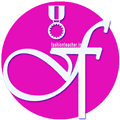Train (clothing)
In clothing, a train describes the long back portion of a skirt, overskirt, or dress that trails behind the wearer. It is a common part of a woman's court dress, formal evening gowns or wedding dress. The term is also used for the highly elongated upper tail covert feathers used in display by male peafowl.In the Roman Catholic Church the cappa magna (literally, "great cape"), a form of mantle, is a voluminous ecclesiastical vestment with a long train. Cardinals, bishops, and certain other honorary prelates are entitled to wear the cappa magna.
Types of train
Fashion
- Court train - Worn for formal court occasions, the court train had to fall in with strict dress codes which differed from court to court. For example, the French court code set in 1804 by Jean-Baptiste Isabey prescribed a four-inch maximum width for embroidered train borders for non-Royal wearers.
- Double train - Two trains attached to the same dress, or a single train divided into two trails.
- Fishtail train - A train popular at various times from the 1870s onwards, flaring out from mid-way down a close-fitting skirt.
Wedding dress
Trains in modern (20th and 21st century) bridal wear have their own terminology:
Cathedral train - also known as a monarch train, this can measure up to eight feet (2.4 metres).
Royal cathedral train - is considered the longest, most formal train, measuring up to ten feet (3 metres) or more.
Chapel train - a medium length train up to five feet (1.1 to 1.5 metres) long.
Court train - in bridal terminology, a court train is a narrow train extending 1 metre behnd.
Sweep train - a short train that does not necessarily reach the floor. It is so called because it might just sweep the ground.
Watteau train - a modern version of the pleated backs (called 'Watteau pleats') seen in eighteenth century sack-back gowns.




EmoticonEmoticon